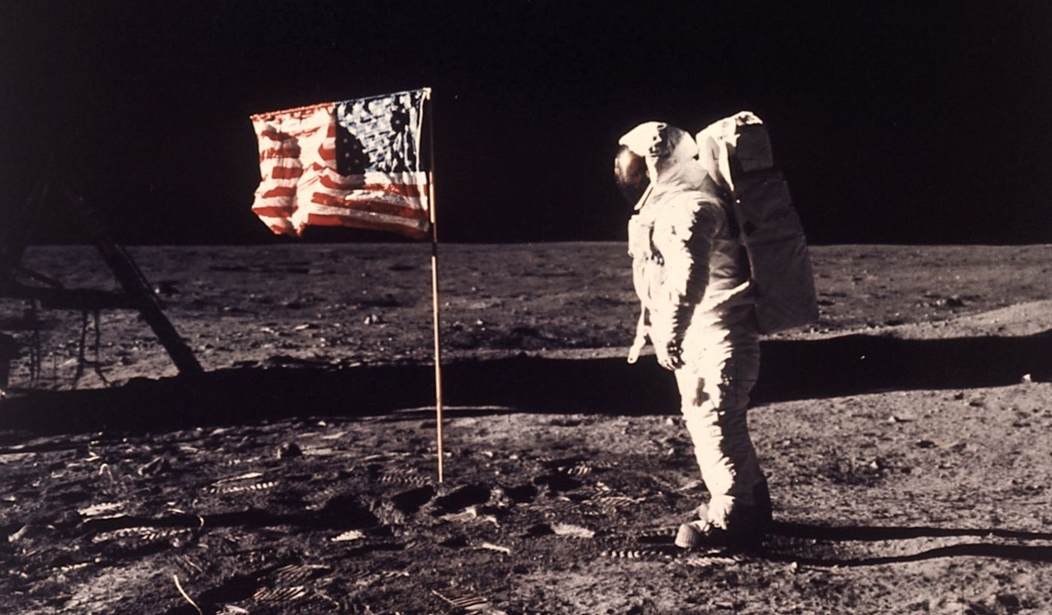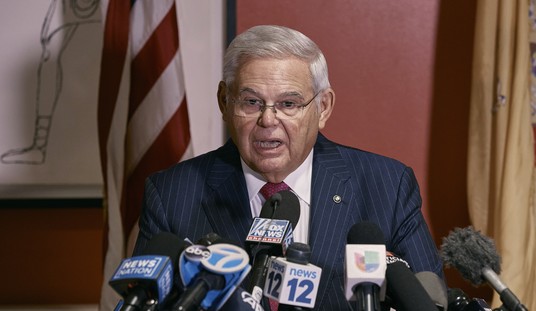In the 1970s and ‘80s, NASA had a serious marketing problem. The glory years of the moon landings were over, and the Space Shuttle, initially fascinating to the public, became a routine, in-the-background news story, until it wasn’t, when the Challenger exploded in 1986. NASA was sitting on hundreds of hours of film shot by the astronauts on converted U.S. Air Force aircraft gun cameras during the lunar missions, which it meticulously kept stored in climate-controlled conditions, but the public rarely saw this footage.
Enter Al Reinert (1947-2018), a former journalist who had covered Apollo 17, the last moon landing, for the Houston Chronicle. As he told the Chronicle in 2015:
“They had this amazing trove of footage at NASA, but at that time nobody was doing anything with it,” he said. “You’d see the same clips over and over on TV. They had miles of footage just sitting there.”
For years — while he worked at the Chronicle and later as a writer for Texas Monthly — Reinert pored through the footage and interviewed astronauts. In 1989 he released “For All Mankind,” a gorgeous documentary that focused on the Apollo missions. The film felt more like a tone poem than a fact-filled documentary.
Interstellar Georgia Overdrive
That “tone poem” feel came from two critical choices that Reinert made while assembling his documentary: first, because the astronauts of the 1960s and early 1970s were all white men in their 30s, most having previously been test pilots, Reinert decided to blend their stories, to create a single composite moon flight, sometimes with the voiceover of a different astronaut than the one who is pictured at the time onscreen. Reinert even included a shot of Ed White spacewalking during Gemini 4 while orbiting the earth, because, according to Reinert, the Gemini capsules had larger windows than its successors, the Apollo command module, and the Space Shuttle.
Second, while a country music fan himself (as were many of the astronauts), Reinert commissioned former Roxy Music synthesizer player and future U2 producer Brian Eno to craft the score. Eno’s score featured a unique blend of synthesizers and pedal steel guitars, to create a sort of ambient interstellar country space music. As Eno would tell a Rolling Stone interviewer last year for an article tied in with the 50th anniversary of Apollo 11:
“One thing that struck me when watching it was the bravery of Mike Collins who was just left all on his own,” Roger says, referring to the astronaut who manned the spacecraft while Armstrong and Buzz Aldrin explored the moon. “I just thought about the staggering loneliness that man could have felt. That’s how we approached the writing of it, trying to inhabit the emotions and accentuate the existing beauty in the film.”
Although they filled the record with quivering synths and the aural equivalents of astral phenomena, the three musicians also wanted to give their soundscapes a distinctly human quality. This was partially because they learned that the astronauts brought cassettes with them into space, and two out of three of them picked country tapes. (Neil Armstrong chose much more extraterrestrial-sounding theremin music, and one scene in For All Mankind shows one of the astronauts playing the Richard Strauss piece featured in 1968’s 2001: A Space Odyssey.) But it was the country aspect that stuck with Brian.
“I just love the thought that they were these people doing this amazingly avant-garde thing — leaving the planet — and they were playing country & western music,” he says. “It made complete sense to me emotionally because, in a sense, country & western is part of that American idea of the frontier and the new world. It gave me a more interesting place to start making music instead of just some kind of impressionistic space thing. The idea of using instruments like pedal steel guitar in space music, that really made sense to me.”
Eno’s “An Ending (Ascent),” written for For All Mankind, has popped up in all sorts of places since, including the opening ceremony of the 2012 Olympics, and even as part of a moving moment during the otherwise comedy-filled antics of the long-running BBC Car show, Top Gear:
While Reinert had many telephone calls with Neil Armstrong, who encouraged his efforts during the years in the 1980s while Reinert was assembling his footage, Armstrong, humbled by his having been the first man on the moon, refused to go on the record for an interview. However, Reinert used recorded interviews with 13 of the 24 Apollo astronauts to serve as the dialogue layered on top of Eno’s music and the vintage NASA footage.
As TCM notes on their webpage devoted to the movie:
Reinert first got interested in doing a film about the Apollo missions after researching a story about all of the astronauts for the Texas Monthly in 1979. In an interview with Anne S. Lewis of The Austin Chronicle, the director said, ‘I was amazed that no one had made a movie out of this stuff. Television was the worst way to see the moon; the more you shrink what was the biggest location shoot in cinema history, the more it looked phoney. It just had to be seen on the big screen.’
Initially, Reinert thought For All Mankind would be easy to assemble due to the extensive available footage but it ended up taking ten years to complete. Part of the long production process involved the enlargement of the 16mm footage he selected for his documentary. Since the material had originally been shot on a special type of film that could not be removed from the Johnson Space Center premises, Reinert had to get approval to bring in an optical printer and enlarge the film on site, frame by frame. According to the director, it took him a year and a half just to print 80 minutes of film.
Peak Performance
During the 1960s and ‘70s, the golden era of NASA was shown on television with little more than static-laden, often black-and-white images, particularly once the rocket cleared the pad. If only NASA had the foresight to hire someone like Reinert while the moon missions were still ongoing, perhaps its future would have been very different. In 2010, Bruce Charlton, a professor of theoretical medicine at England’s University of Buckingham, posited that “Human capability peaked before 1975 and has since declined,” which Mark Steyn referenced in his 2011 book, After America. Charlton wrote:
I suspect that human capability reached its peak or plateau around 1965-75 – at the time of the Apollo moon landings – and has been declining ever since.
This may sound bizarre or just plain false, but the argument is simple. That landing of men on the moon and bringing them back alive was the supreme achievement of human capability, the most difficult problem ever solved by humans. 40 years ago we could do it – repeatedly – but since then we have not been to the moon, and I suggest the real reason we have not been to the moon since 1972 is that we cannot any longer do it. Humans have lost the capability.
Of course, the standard line is that humans stopped going to the moon only because we no longer wanted to go to the moon, or could not afford to, or something…– but I am suggesting that all this is BS, merely excuses for not doing something which we cannot do.
It is as if an eighty year old ex-professional-cyclist was to claim that the reason he had stopped competing in the Tour de France was that he had now had found better ways to spend his time and money. It may be true; but does not disguise the fact that an 80 year old could not compete in international cycling races even if he wanted to.
As Glenn Reynolds noted at our sister site Instapundit on July 17th of last year, in a part preceding the 50th anniversary of the Apollo 11 mission, “The ‘Golden Quarter Century’ of stunning progress ended in 1971. Weirdly, that’s when the regulatory explosion took off. And it’s when economic inequality started to get worse, so it’s a two-fer for the left.”
It was 20 Years Ago Today…
In the 1980s, the Criterion Collection specialized in premium laserdisc editions of classic films, and noteworthy new documentaries. Criterion helped to put For All Mankind on the cultural map in 1989, the 20th anniversary of Apollo 11. When Siskel and Ebert reviewed the movie, they were discussing its laserdisc version, not a cinematic release:
The Criterion Collection’s Blu-ray edition for For All Mankind is built around a “New, restored high-definition digital transfer, supervised and approved by producer-director Al Reinert, with DTS-HD Master Audio 5.1 soundtrack” — and the Saturn V launch will give any home theater’s subwoofer a workout — there’s quite a long, low roar as the engines ignite and spit hellish flames to slowly propel the three-thousand-ton beast off the pad.
There is also an optional second audio track, “commentary featuring Reinert and Apollo 17 commander Eugene A. Cernan, the last man to set foot on the moon.” During their discussion, Cernan notes that when Kennedy issued his legendary goal to America, “before this decade is out, of landing a man on the moon and returning him safely to the earth,” the grand total of America’s manned spaceflight experience was 15 minutes — Alan Shepard’s first suborbital flight, Freedom 7.
Reinert admits to Cernan that a shot of the moon through an Apollo capsule window, seemingly taken while atop the Saturn V awaiting liftoff, was, in fact, “the only fake picture in the entire movie. [The astronauts] actually could see this…but all the cameras were stowed away at the time [of the launch]. I mean, there’s no way they were going to shoot that picture, so we had to do it for them. We went down to the Johnson Space Center, where there’s one of the [Apollo] hatch covers, and we pasted a picture of the moon against a blue sky over the hatch cover in the museum there and we just shot it ourselves.” Given Reinert’s Texas twang, a voice that’s an octave higher than the late Cernan’s, the listener will have no problem telling the two speakers apart.
The film is a cultural time capsule as well—watching some of the men in Mission Control smoking pipes and cigarettes while at their desks, and, depending upon the year the footage was shot, watching sideburns slowly going lower, neckties becoming fatter, and the hair beginning to grow longer. This was still an era of mass media, and if the nation’s magazines and network television shows decided that bold, fat ties and long sideburns were in, even NASA wasn’t fully immune.
It felt strange in 1989, watching the two-decade-old footage in For All Mankind, but the Space Shuttle program was still ongoing, even if there was another fiery disaster yet to come. We’ll eventually send men to the moon again (and women as well, this time around, of course), possibly with an entrepreneur like Elon Musk or Jeff Bezos leading the way (even though the project will likely ultimately be as corporatist as the original flights) — maybe even within my lifetime. But until then, For All Mankind is a celebration of what Americans taking technology — and the human spirit — to the limits for their day and age.










Join the conversation as a VIP Member